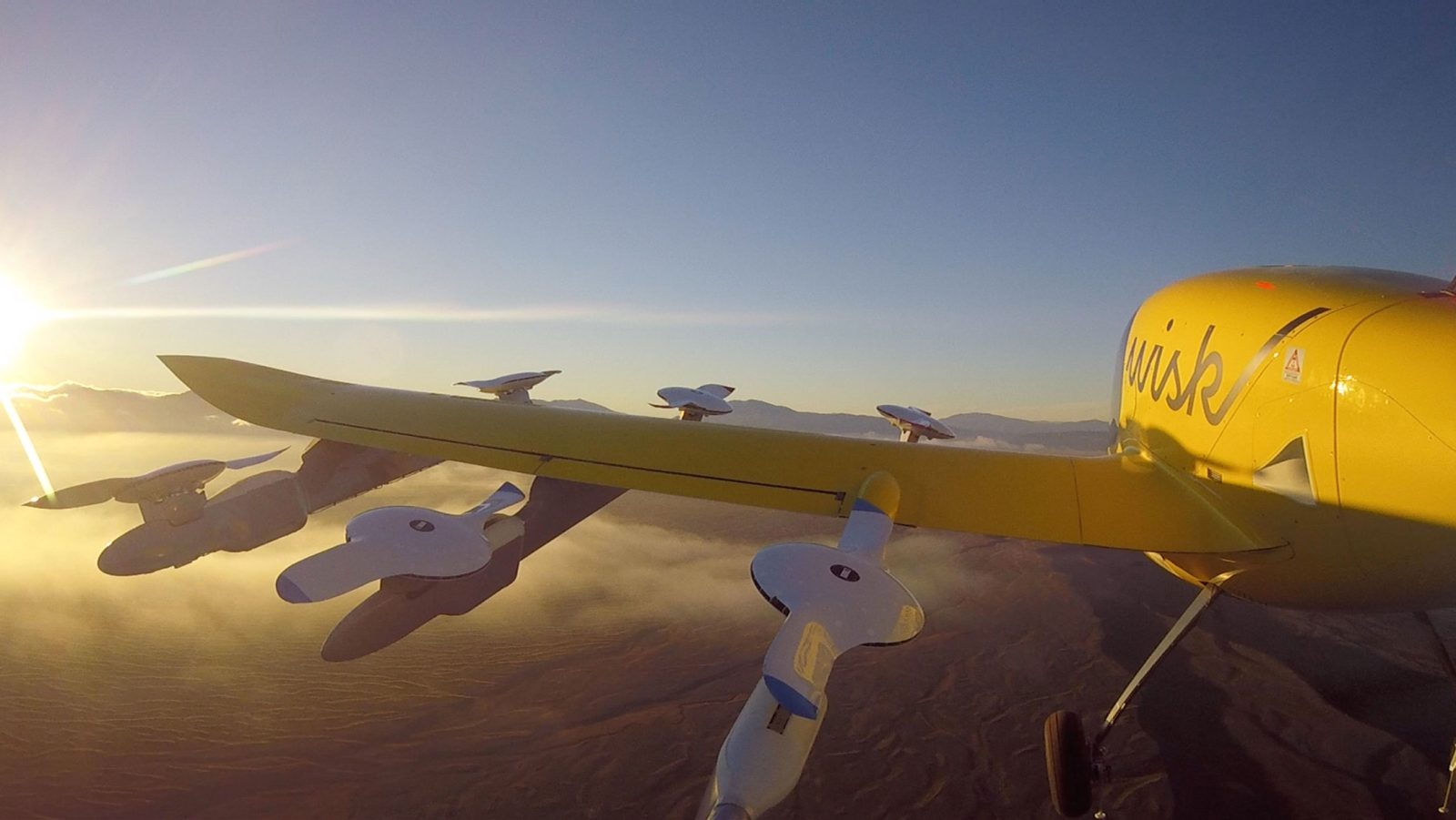
Pioneering advanced air mobility (AAM) company Wisk Aero is getting a financial boost in its drive to obtain certification of its electric takeoff and landing (eVTOL) air taxi craft through a $450 million infusion from aviation giant and corporate mentor Boeing.
Wisk said the considerable influx of capital would be used to accelerate further development and testing of its sixth-generation eVTOL air taxi toward Federal Aviation Administration certification, and underwrite the launch of large-scale manufacturing beyond that. The company says the investment – in addition to those previously made by other corporate benefactors – makes Wisk “one of the most well-funded AAM companies in the world.”
In making the announcement, Wisk also outlined the ambitious objectives it plans to fulfill as AAM vehicles and services take to the skies over the next few years.
Wisk is often described as a joint venture formed from the 2019 link-up between Boeing and Kitty Hawk, but the company’s history in eVTOL and air taxi activity goes back farther. It first began in 2010 as Zee Aero, and fairly rapidly drew the attention of Kitty Hawk, with which it partnered to make its conceptual craft reality faster.
En route to its Kitty Hawk and Boeing-backed reincarnation as Wisk Aero, the company succeeded in making what it calls “the first flight of an all-electric, autonomous, eVTOL aircraft designed for air taxi use.” Over the last 12 years the company says it racked up 1,500 test flights of full-scale aircraft.
Its R&D budget now swollen with Boeing’s infusion, Wisk says its goal is to become the first-ever candidate for certification of an autonomous, passenger-carrying eVTOL air taxi craft in the US.
“Wisk is extremely well-positioned to deliver on our long-term strategy and commitment to safe, everyday flight for everyone,” said Wisk CEO Gary Gysin. “We are incredibly fortunate to have Boeing as not only an investor but a strategic partner, which provides us with access to a breadth of resources, industry-leading expertise, a global reach, extensive certification experience, and more. As we enter this next stage of our growth, this additional funding provides us with capital while allowing us to remain focused on our core business and our number one priority, safety.”
The canary-yellow Wisk prototypes get their vertical lift from 12 individual rotors attached to a 36-foot fixed wing, and thrust from a tail-mounted propeller. When they first go into service, Wisk eVTOL air taxis will have a maximum 25-mile range on a single charge, and reach top speeds of 100 mph. The craft will operate autonomously, with remote human monitoring.
The goals Wisk outlined in making its infusion announcement are almost as big as the bucks Boeing has put into the unit.
Within five years of its aircraft receiving certification, Wisk plans to be operating one of the biggest fleet of eVTOL vehicles in the global AAM sector. Within that same half-decade period, the company estimates nearly 14 million AAM flights will be made each year, offering considerable savings in time and increased convenience to over 40 million people in 20 cities where passenger services are anticipated.
“Autonomy is the key to unlocking scale across all AAM applications, from passenger to cargo and beyond,” said Boeing chief of strategy Marc Allen in explaining the company’s renewed backing of Wisk. “That’s why straight-to-autonomy is a core first principle. Boeing and Wisk have been at the forefront of AAM innovation for more than a decade, and will continue to lead in the years ahead.”
FTC: We use income earning auto affiliate links. More.



Comments